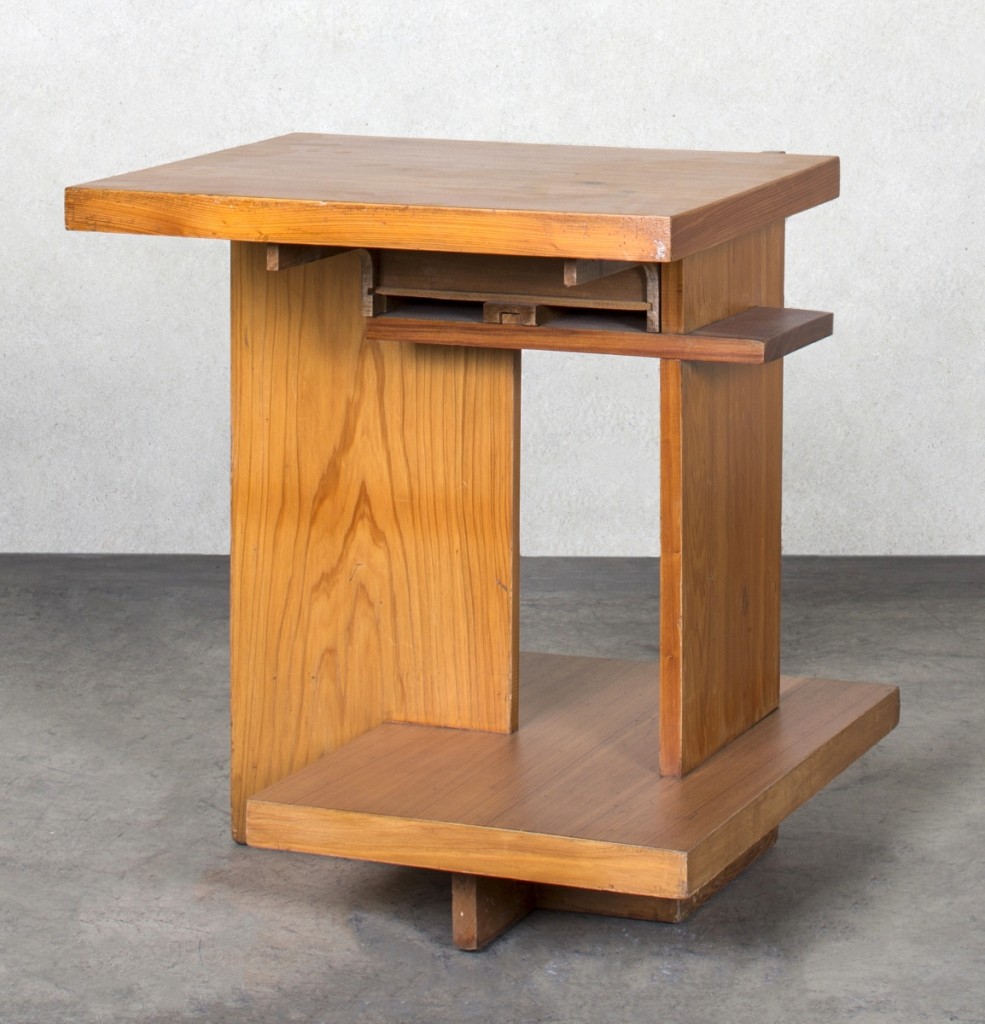
The New York Times affectionately called Mark McDonald “Mr Modernism” in a 2002 story about the dealer relocating to Hudson, N.Y., from his long-held Manhattan storefront. A lot has changed since then, but McDonald’s career in Modernism may well never cease. Since, he has racked up two single owner auctions at Sotheby’s and Rago, has shifted his interest toward Midcentury Modernist Studio jewelry, is currently working on a book about Greenwich Village jeweler Sam Kramer, and he is the guest curator of “Inside the Walls: Architects Design,” an exhibition at Friedman Benda running through February 17. We caught up with Mark to talk about the exhibition and see what the dealer is up to these days.
Tell us about “Inside the Walls: Architects Design,” your guest-curated exhibition at Friedman Benda.
I have always been excited by modern architecture; pursuing and promoting great examples of furniture designed by architects has always been the focus of my career. When Marc Benda asked me to curate an exhibition for his annual guest curator series at Friedman Benda, I naturally chose this topic. Architects and their designs are often at the forefront of “newness” in the design world, pushing the existing boundaries by employing new forms, new materials and new techniques and expanding the vocabulary of furniture design.
My favorite pieces of furniture in my personal collection are designed by architects; they never fail to excite me, they just have that “Wow” factor: a side table by Frank Lloyd Wright from Falling Water, an early ESU 4-tier cabinet by Charles and Ray Eames for Herman Miller, a rare square dining table from 1980 by Ettore Sottsass for Knoll and a library table from 1949 by Alvar Aalto for the Fondren Library at Rice University. This exhibition will showcase some examples of Frank Lloyd Wright furniture from the Usonian (1938-55) period from my personal collection that have never been offered for sale.
Many of the selections we are offering in the exhibition are unique custom designs for specific commissions, both residential and commercial. A good architect/client collaboration often produces groundbreaking results, affording the architect the chance to control not only the exterior but also the furnishings used within the walls. Frank Lloyd Wright liked to use the word “organic”; I believe it was his personal euphemism for “total control.”
With the examples we have chosen for “Inside the Walls,” we strive to highlight the imagination, innovation and free spirit that architects bring to the table when designing for one and all.
What does architect-made design provide that works by furniture or interior designers do not?
An architect’s unique furniture is often more experimental, anti-traditional, unrestrained by the demands of the marketplace. Even when designing for production, architects, especially if they are famous, are given more freedom than an “in-house” designer. A furniture company or manufacturer may hire a “starchitect” to boost their visibility, to promote their modern program, and to attract publicity for all their other lines/products.
What’s your favorite work in the exhibition?

Frank Lloyd Wright (American, 1867–1959), end table with one drawer for the Misses Charlcy and Gabrielle Austin’s “Broad Margin” House, Greenwood, S.C., circa 1951, tidewater cypress. Photo courtesy of Friedman Benda and Frank Lloyd Wright. —Dan Kukla photo
The Frank Lloyd Wright side table from Broad Margin. It is a perfect piece of Twentieth Century abstract art in wood designed as a simple night stand by the most important architect of the Twentieth Century. It is the first thing I see in the morning and the last thing I see at night, it usually sits next to my bed.
Of all the advancements that designers have employed in furniture throughout the past century, which one amazes you most?
Bending wood into new forms, specifically the innovation that Charles and Ray Eames came up with to laminate plywood into the third dimension: the leg splint for World War II that gave rise to the wooden chairs from 1945.
You had a 2011 single-owner sale at Sotheby’s followed by a 2017 single-owner sale at Rago. Is there more to be had? Do you think we’ll see another sale before you’re through?
The Sotheby’s sale was a very big deal for me; I sold many great things that I had owned for years and some very excellent inventory. Although I love living in Hudson, doing business with expensive inventory outside of New York City was a challenge. I was never good at selling second-hand furniture to people for their second homes. The Rago sale was a way to clear out a lot of remaining inventory, with a few notable exceptions, because I needed the space. I doubt that I’ll ever have the volume of inventory to build another complete sale, although I will continue to work with my friends at Rago, Wright, Toomey, LAMA and those other big city auction factories when it makes sense.
What else are you up to these days?
I still work with many museums and a few collectors for specific things. I am still very active in the Midcentury Modernist Studio jewelry field, representing the estate of Art Smith, and I work with the families and estates of other jewelers from the era. I am currently working on a book about the Greenwich Village jeweler Sam Kramer. I hope to do a book soon about the history of our original store, Fifty/50. I am often asked to speak on Midcentury decorative arts panels. And I also do appraisals. I spend my winters in Miami where I research and collect Modernist Cuban art from the pre-Castro era, 1945-1960.
-Greg Smith




